Siwa Oasis has everything a traveler can expect from a place like this: tranquility, natural beauty, historical and artistic interest, deep-rooted traditions… That’s why including it in your trip to Egypt will be a decision you won’t regret. On this page, we provide you with all the information you need to know in advance: where it is, how to get here, what to visit… And remember, you can organize your experience with Egipto Exclusivo to ensure every detail is taken care of.
Siwa Oasis is located in the Western Desert or the Libyan Desert, similar to Bahariya, Dakhla, and Kharga. However, its geographical location has made it a unique and sometimes forgotten oasis. It is nearly 800 km by road from Cairo and almost 300 km from Marsa Matruh, the nearest Mediterranean city. It is also far from the other oases, with the closest one being Bahariya, over 420 km away. In fact, it is closer to the Libyan border, just 100 km away, although there is no road connection to it.
This has led to certain aspects of its culture developing almost autonomously, with little connection to the rest of the country. For example, its language, Siwi, which is of Berber origin and has been used for ages. Elements of clothing and craftsmanship also reflect this independence, as these traditions remain vibrant in Siwa. Even its social organization, to a large extent, maintains tribal structures. This has also contributed to a somewhat closed social character among its inhabitants, which is gradually evolving due to tourism.
The length of Siwa Oasis is estimated to be around 80 km, with a width of approximately 20 km. The population of about 25,000 people makes it a relatively less populated place. It is predominantly dedicated to agriculture, with dates and olives as its main products, as palm groves coexist with olive groves in this oasis paradise.
All of this occurs in the space between the two lakes that form Siwa Oasis, although there are areas dominated by mud due to water drainage for agricultural use. The western lake, where an interesting range of accommodations has developed, is particularly notable.
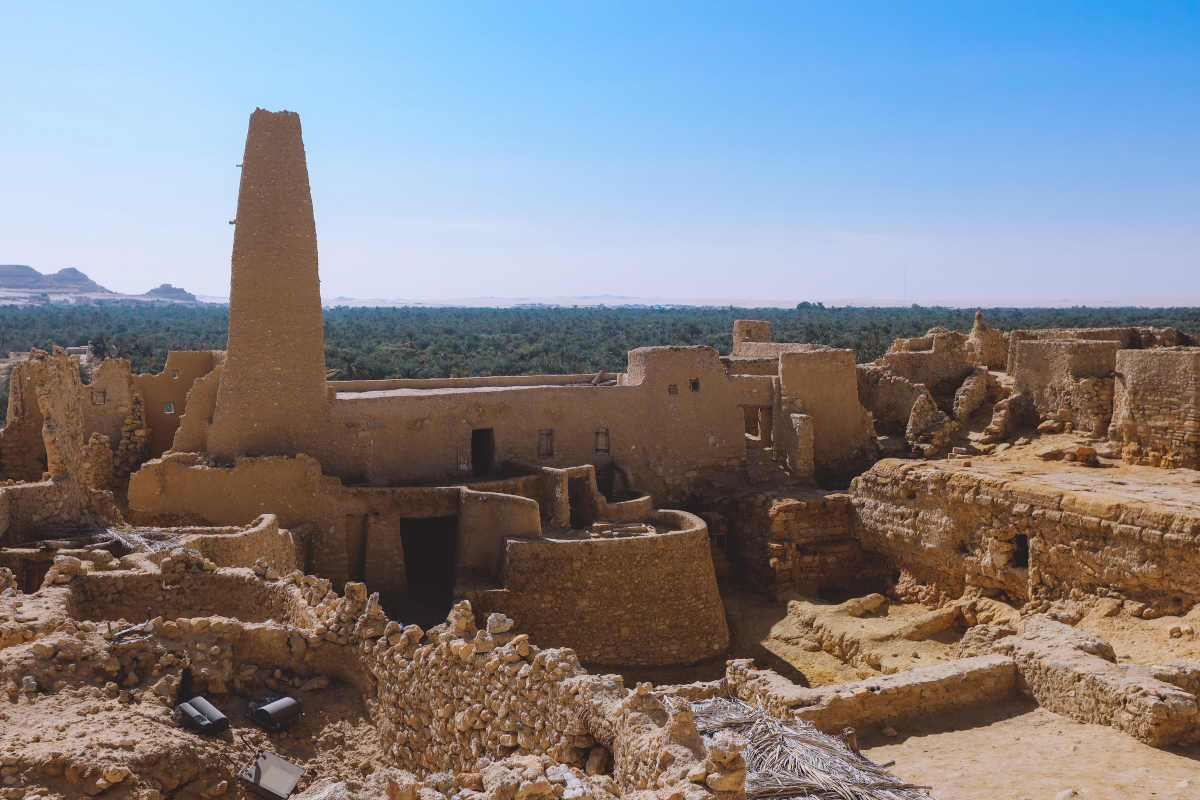
History enthusiasts and curious travelers may know Siwa Oasis for its famous Oracle of Amun, which contributed to giving this place a sacred character. The exact moment when it started hosting stable populations is unknown, although clear evidence is lacking before the 26th Dynasty (664-525 BC). In any case, some legends associate the Oracle of Amun with the queen-pharaoh Hatshepsut, suggesting its existence during the Middle Kingdom (18th Dynasty).
At the beginning of the following dynasty, the 27th Dynasty of Persian rulers, an event related to the Oracle of Amun and narrated by Herodotus is said to have taken place: a military expedition of 50,000 men sent by Cambyses II to destroy this sacred place would have failed miserably, getting lost in the desert and perishing. However, this account is conditional as no evidence of such an expedition has been found, and many experts consider it an invention or an error by Herodotus.
True or not, this story likely reached the ears of Alexander the Great, who embarked on a journey of over a week to Siwa Oasis with a different purpose: to visit the oracle and inquire if he was the son of Zeus. He never revealed the response but certainly respected it with utmost solemnity, expressing his desire to be buried here to his generals.
As we mentioned on the Alexandria page, it is most likely that after his death in Babylon, his sarcophagus was transferred to that Mediterranean city… although its whereabouts have never been discovered. Nevertheless, some maintain hope or intuition that his much sought-after tomb is indeed here in Siwa Oasis.
Under Roman rule, Siwa Oasis experienced a decline: the Oracle of Amun lost credibility, and the area served only as a refuge for exiles from the rest of the country. The extent of Coptic Christianity’s influence and the time it took for the area to be conquered by Arab troops who converted Egypt into Islamic territory are unclear.
During medieval times, according to some estimates, only a few dozen people lived here, though the population gradually increased to several hundred. From the late 18th century, European explorers embarked on expeditions to Siwa Oasis when its connection to Egypt was still not well established, but it was definitively annexed to the country during Mehmet Ali’s time. This was not well accepted by the local population.
In the 20th century, Siwa Oasis became part of the military theater in both World Wars, being occupied by both allies and Nazis at various times. However, its major disaster came in 1926 in the form of torrential rains that caused significant damage to the structures of the Shali Fortress.
Gradually, Siwa Oasis has integrated into modern life, with conveniences that took time to arrive but eventually did, such as television and asphalt roads, in the last decades of the past century.
The tourist offerings for those traveling to Siwa Oasis are varied and diverse, including nature, history, wellness, and more. Here we highlight the most important attractions, both in the village and its surroundings.
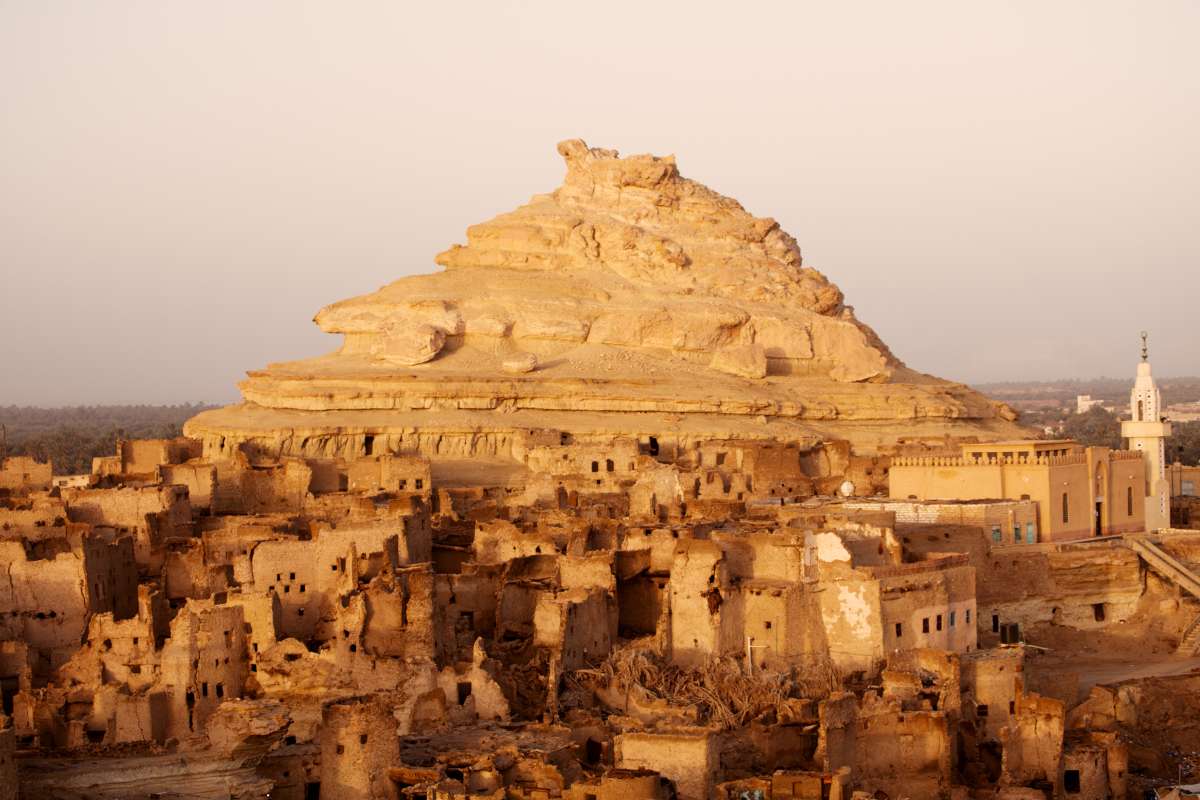
The Shali Fortress clearly stands out in the center of Siwa. It can be seen from all points of the town, as it rises on a large walled hill that served as protection against Bedouin hostilities. With the torrential rains of 1926, the structures of this fortress were heavily damaged and ultimately abandoned. Now, its ghostly appearance is as attention-grabbing as the panoramic views from its heights.
In addition to this fortress, one of the places that offers an interesting visit is the Siwa House Museum, which was established to preserve the memory of traditional mud-brick houses, fearing they might disappear forever due to another natural disaster. It is a small ethnographic museum that showcases the typical layout, decoration, and everyday objects and utensils found in these houses.
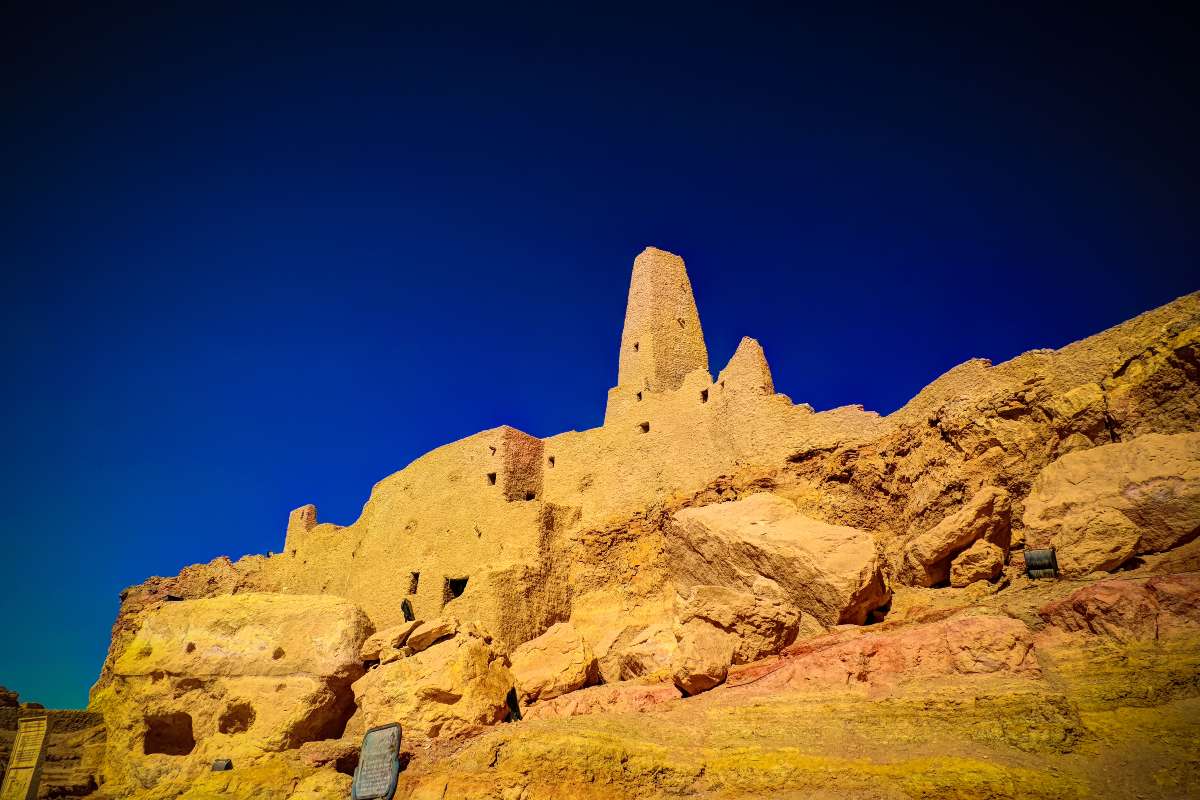
Although in a ruined state, the Temple of the Oracle of Amun is the most symbolic site in Siwa Oasis. It is located on the outskirts of the town, on Aghurmi Hill. It enjoyed great fame and prestige in ancient times, especially during the Greco-Roman period when the god Amun was assimilated with the Greek supreme god, Zeus. The ancient Greeks believed that it was founded in parallel with Dodona, the most famous oracle of their civilization, with both having their origin in the flight of two black doves that flew from Thebes to their respective places.
The Oracle of Amun is best known for the visit made by Alexander the Great during his brief stay in Ancient Egypt, as mentioned earlier. Recalling that visit will require quite a bit of imagination, as this temple is heavily deteriorated, with only a few wall fragments and some doors with lintels still standing. The same will apply to the Temple of Umm Ubedah, another temple located next to the Oracle of Amun and surrounded by palm trees.
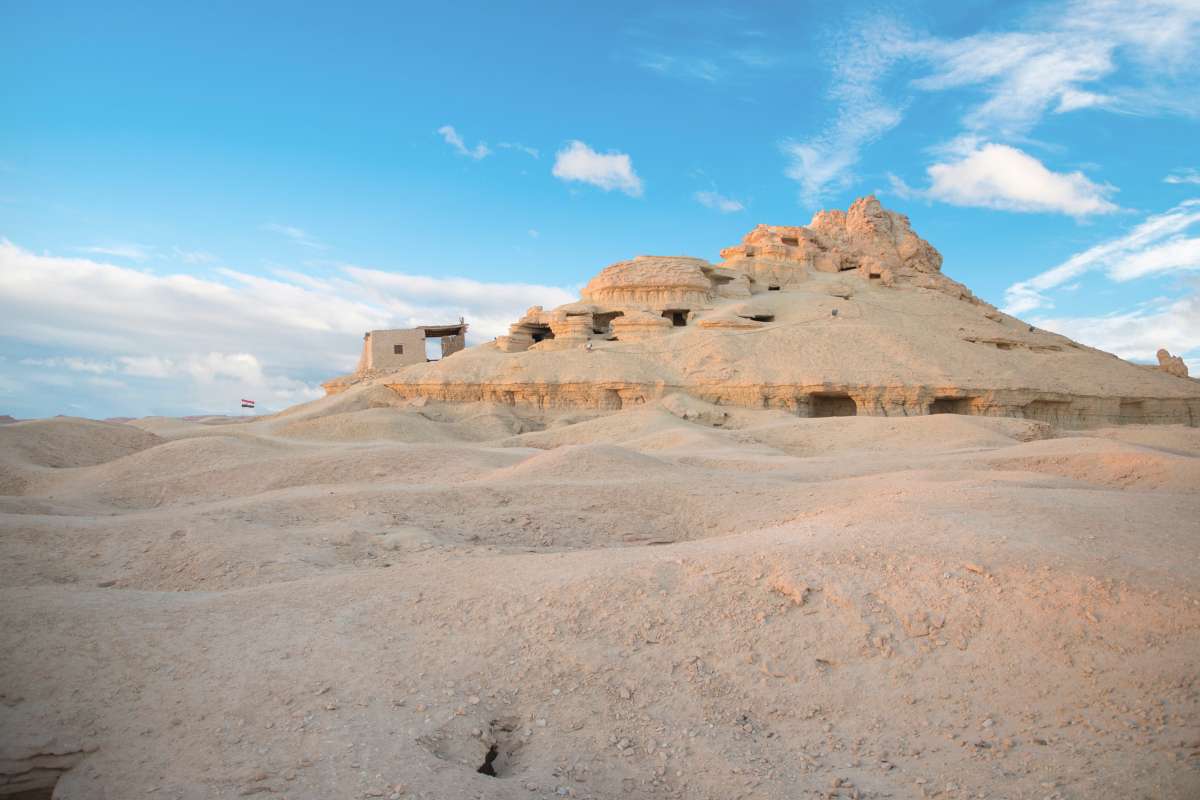
The other significant visit to learn about the history and culture of Siwa Oasis is at Gebel al-Mawta, translated as the Hill of the Dead. Located just over a kilometer north of the town, it is a necropolis from the Ptolemaic and Roman periods with numerous rock-cut tombs, although only some are open to visitors. Inside, you will find remains of mural decoration where the deceased and their families worshiped local gods, including the god Sobek, represented by a crocodile and highly popular in this and other oases of the country.
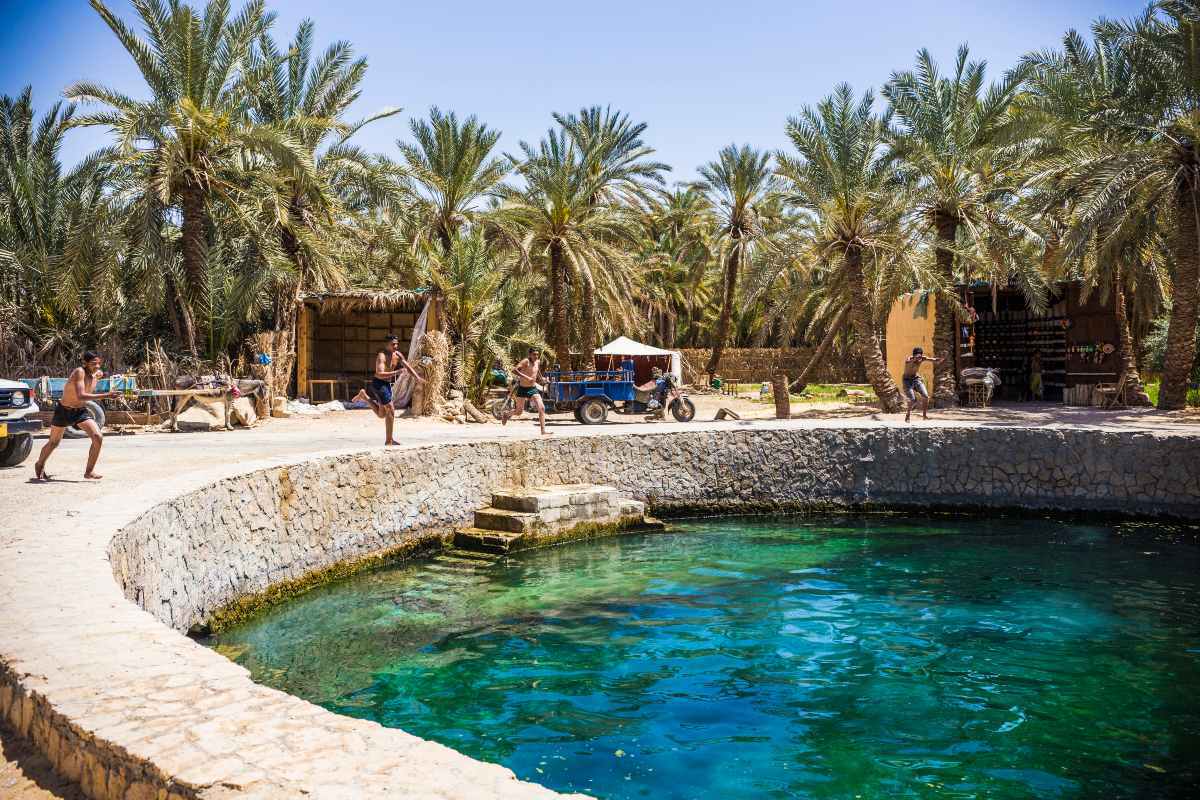
Another illustrious name associated with Siwa Oasis is that of Cleopatra. It is believed that she bathed in a stone pool that receives water from a spring. It is a popular spot among the locals, who enjoy diving into it. Therefore, it has its own dining options, with establishments offering terrace seating, allowing travelers to feel like the famous ruler of Egypt.
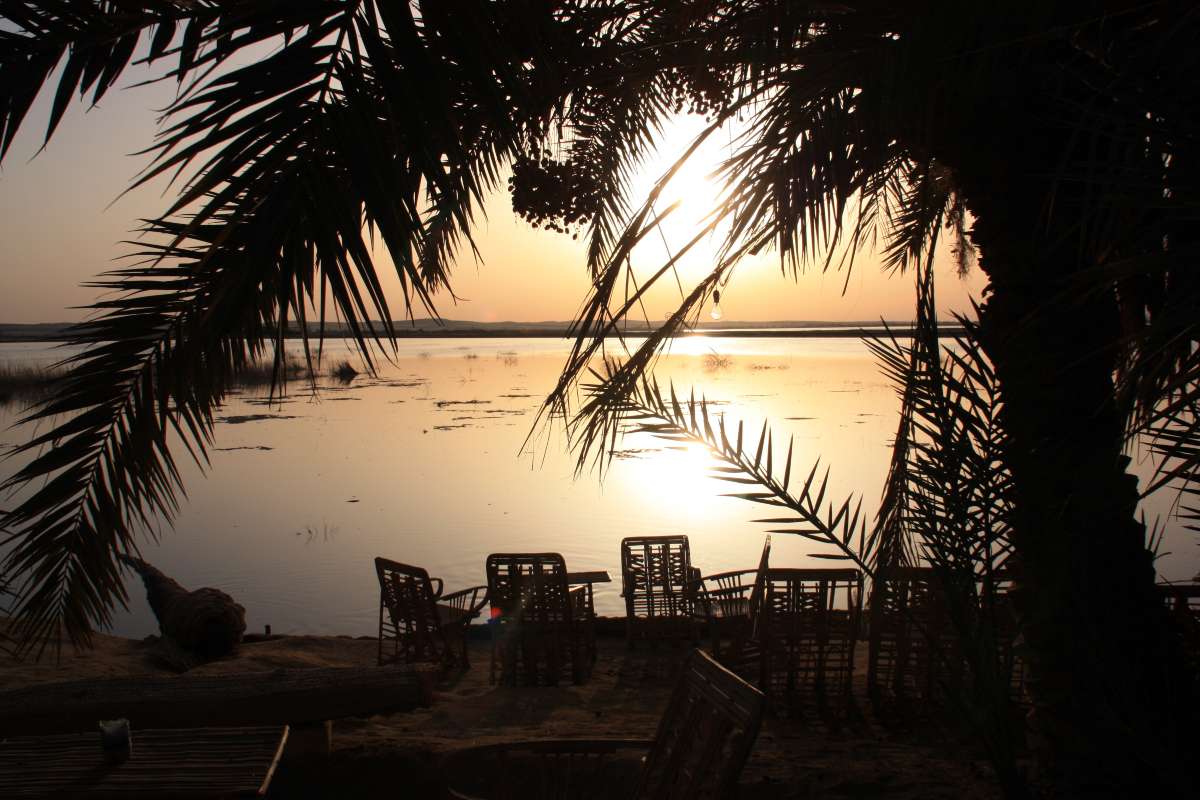
But if you’re looking for a more idyllic location, it’s best to head to the other lake, about 4 km west of the town: that’s where Fatnas Island is located, a larger and better-equipped place with its own spring. In reality, along the shore of this saltwater lake, there are hotels and establishments where you can relax and savor the classic atmosphere of Siwa Oasis.
In addition to these points of interest within the town or on the outskirts of Siwa Oasis, it serves as a base for desert excursions. This extreme and unique natural ecosystem, unlike anything one sees in their day-to-day life, is an attraction in itself. And with a good 4×4 vehicle, you can reach locations that seem like they’re from a fantasy world.
One such example is the Great Sand Sea. It is a vast area, spanning tens of thousands of square kilometers, dominated by spectacular sand dune formations. It extends south and west of Siwa Oasis, all the way to the border with Libya, and is perfect for spiritual and relaxation tourism enthusiasts as it provides an ideal setting for meditation activities.
Lastly, we mustn’t forget one of the attractions of Siwa Oasis: its craftsmanship. Thanks to its natural isolation, traditional activities have thrived until recently and are still preserved as a cultural heritage that sees tourism as a path to development.
Throughout the town, you’ll find small shops and even street vendors selling a wide range of handmade objects. Palm frond baskets, made from the most abundant species in Siwa Oasis, are particularly prominent. Ceramic articles like jars and incense burners are also abundant. Additionally, the silver jewelry, especially rings and small ornaments, is unique and inherits a tradition that enjoyed great recognition in the past.
Traveling to Siwa Oasis requires patience as the journey is not short. Fortunately, it won’t be as long as the one made by Alexander the Great from Alexandria in 331 BC, which took eight days according to ancient sources. However, it’s important to note that Siwa Oasis is not en route to any other tourist destination, so any journey will involve hours of travel regardless of the starting point.
As you can imagine, Siwa Oasis does not have a train station, and due to its natural isolation, it cannot be accessed by boat. Furthermore, it is not part of the bus network operated by major companies. Additionally, neither the population nor the number of annual tourists are large enough to warrant the construction of an airport nearby, so flying is not a viable option to reach Siwa Oasis. The nearest airport is Marsa Matruh Airport on the Mediterranean coast, about 300 km away by road.
Therefore, Marsa Matruh is the city from which many excursions to Siwa Oasis depart. This beach resort destination, which has opened up to international tourism in recent years, serves as a base for short trips to this unique enclave in the Western Desert. Marsa Matruh Airport receives seasonal direct flights from other Mediterranean destinations, primarily Italy.
Hence, a private vehicle is the only way to reach Siwa Oasis, whether you’re starting from Marsa Matruh or other parts of the country. Here is a list of distances and estimated travel times from major starting points for excursions to Siwa Oasis:
Of course, a private car is also essential for getting around the various points of interest in Siwa Oasis: its lakes, ancient temples, archaeological sites, and if you plan to venture into the desert, a 4×4 off-road vehicle or a quad will be the preferred choice, always accompanied by experts for your safety.
Fortunately for you, Egipto Exclusivo provides all these transportation services in Siwa Oasis, as well as other services such as accommodation and professional guide assistance. Contact us to start planning this unforgettable excursion!


Fill out the form below to receive a free, no-obligation, tailor-made quote from an agency specialized in Egypt.
Travel agency and DMC specializing in private and tailor-made trips to Egypt.
Mandala Tours, S.L, NIF: B51037471
License: C.I.AN-187782-3